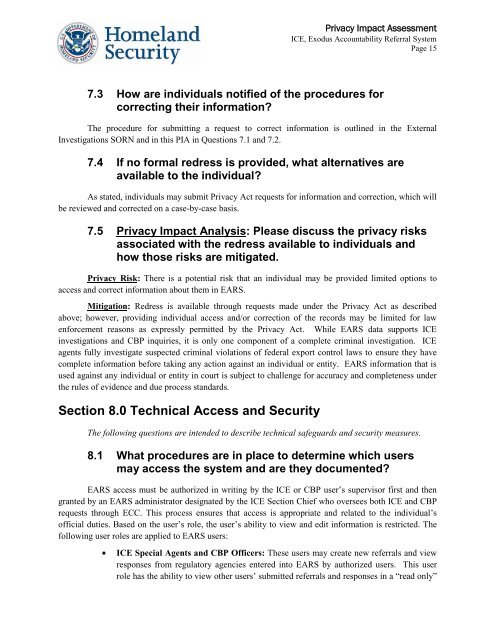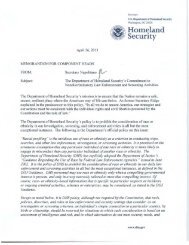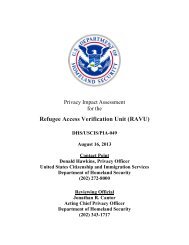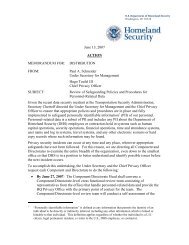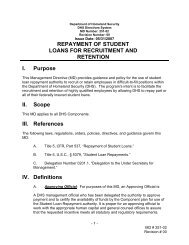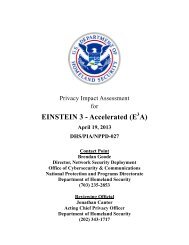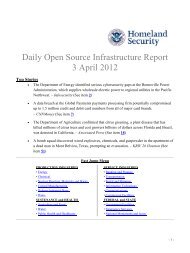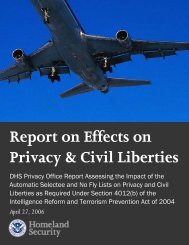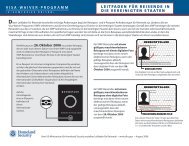Exodus Accountability Referral System (EARS) - Homeland Security
Exodus Accountability Referral System (EARS) - Homeland Security
Exodus Accountability Referral System (EARS) - Homeland Security
Create successful ePaper yourself
Turn your PDF publications into a flip-book with our unique Google optimized e-Paper software.
Privacy Impact Assessment<br />
ICE, <strong>Exodus</strong> <strong>Accountability</strong> <strong>Referral</strong> <strong>System</strong><br />
Page 15<br />
7.3 How are individuals notified of the procedures for<br />
correcting their information?<br />
The procedure for submitting a request to correct information is outlined in the External<br />
Investigations SORN and in this PIA in Questions 7.1 and 7.2.<br />
7.4 If no formal redress is provided, what alternatives are<br />
available to the individual?<br />
As stated, individuals may submit Privacy Act requests for information and correction, which will<br />
be reviewed and corrected on a case-by-case basis.<br />
7.5 Privacy Impact Analysis: Please discuss the privacy risks<br />
associated with the redress available to individuals and<br />
how those risks are mitigated.<br />
Privacy Risk: There is a potential risk that an individual may be provided limited options to<br />
access and correct information about them in <strong>EARS</strong>.<br />
Mitigation: Redress is available through requests made under the Privacy Act as described<br />
above; however, providing individual access and/or correction of the records may be limited for law<br />
enforcement reasons as expressly permitted by the Privacy Act. While <strong>EARS</strong> data supports ICE<br />
investigations and CBP inquiries, it is only one component of a complete criminal investigation. ICE<br />
agents fully investigate suspected criminal violations of federal export control laws to ensure they have<br />
complete information before taking any action against an individual or entity. <strong>EARS</strong> information that is<br />
used against any individual or entity in court is subject to challenge for accuracy and completeness under<br />
the rules of evidence and due process standards.<br />
Section 8.0 Technical Access and <strong>Security</strong><br />
The following questions are intended to describe technical safeguards and security measures.<br />
8.1 What procedures are in place to determine which users<br />
may access the system and are they documented?<br />
<strong>EARS</strong> access must be authorized in writing by the ICE or CBP user’s supervisor first and then<br />
granted by an <strong>EARS</strong> administrator designated by the ICE Section Chief who oversees both ICE and CBP<br />
requests through ECC. This process ensures that access is appropriate and related to the individual’s<br />
official duties. Based on the user’s role, the user’s ability to view and edit information is restricted. The<br />
following user roles are applied to <strong>EARS</strong> users:<br />
ICE Special Agents and CBP Officers: These users may create new referrals and view<br />
responses from regulatory agencies entered into <strong>EARS</strong> by authorized users. This user<br />
role has the ability to view other users’ submitted referrals and responses in a “read only”


